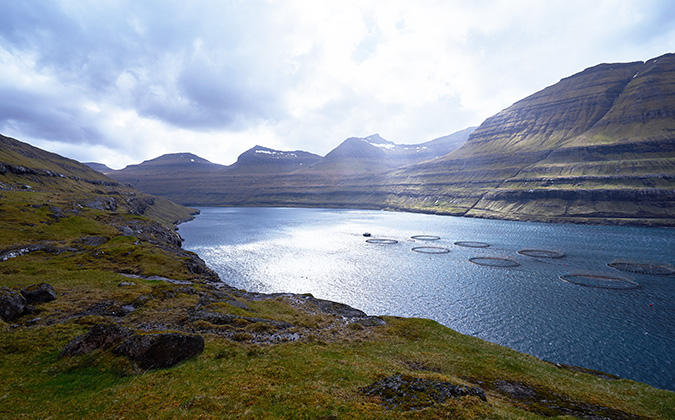
Norwegian salmon industry’s annual ‘health check’ underlines areas for improvement
The Norwegian Veterinary Institute’s latest Fish Health Report1 has highlighted record numbers of sea lice treatments and bacterial diseases causing complications for fish producers in Norway — but in order for its authors to keep up with changes in the industry, new, more specific data needs to be collected and made available in coming years.
Using information from a questionnaire sent out to industry professionals, obligatory reporting such as sea lice counts, as well as data from private laboratories and the institute’s own diagnostic work, its authors presented a national overview that shows enduring challenges and newer trends.
Lice treatments, gill problems up
A long-term issue which has direct and indirect influences is sea lice. Although lice counts have remained relatively stable, due to a fixed limit in Norway at which producers are obliged to apply treatments, the number of treatments has been on the rise, with 2022 a record year.
“Of course, there is a price to pay for those treatments, because it involves handling of the fish,” explained the report’s editor Ingunn Sommerset, PhD.
“If there is a welfare situation, it’s obligatory for the farmer or the fish-health personnel involved in that same incident to report it to the food-safety authorities. Those numbers have also increased in line with the number of treatments.”
From the data available, gill disease and winter ulcers also appear to be on the rise, she noted. Indeed, the report notes that winter ulcer caused by Moritella viscosa “represents perhaps the most acute disease-related welfare problem in the fish-farming industry.”
There have also been concerns about the rise of “variant” genetic clusters of the pathogen which causes winter ulcer, but at the time of publication it was not clear-cut that there had been a distinct shift away from the “classical” forms of M. viscosa. The report noted, though, that several respondents thought that the increase in winter ulcer outbreaks may be linked to a suspected lack of efficacy of vaccine components based on the “classic” M. viscosa.
Some producers also reported trialing a novel monovalent vaccine based on “variant” M. viscosa that was being sold under exemption from approval, with some believing they observed improved results. This will probably be better documented next year, wrote the authors, with further updates on the developing winter ulcer situation no doubt eagerly anticipated by the industry.
Rising bacterial threat?
The threat of Moritella appears to be part of a broader trend toward increased problems with bacterial diseases, as compared to viral conditions reaching something of a “steady state,” Sommerset said.
This is a concern in an industry that uses very low quantities of antibiotics and has good vaccines against bacterial pathogens, she noted, while the issues are likely to be a result of a complex situation which implicates not only increased handling of fish but also the effects of intensive smolt production, season-independent transfer to sea water and environmental changes.
Yersiniosis is one such specific threat to the industry, caused by the bacteria Yersinia ruckeri. There are continued concerns about pasteurellosis, despite cases stabilizing after a steep rise around 3 years ago. There are currently no commercially available vaccines against Pasteurella, Sommerset stressed, although companies are working on potential options and autogenous vaccines are used in the field.
“I think that they are very afraid of this, because even though the mortality is not that high, it affects fish at the end of the production cycle. And that’s where you have invested the most in the fish,” she said.
“Since producers are now very aware of this disease, the focus on biosecurity measures has also increased. So that can help to at least stop the spread.”
A new, old issue shows its face
As well as the emerging diseases that are reported, there are sometimes threats that make a return following years of absence.
In the far north of Norway, there has been a reemergence of the parasite Spironucleus salmonicida, causing high mortality and welfare concerns due to cases developing into the serious condition systemic spironucleosis.
“At this point, it’s tricky to say if this is just something happening in these isolated cases now, which then will go away again, or if it will escalate and continue,” she explained.
Maintaining relevance in changing times
The Fish Health Report is very widely anticipated and read in the Norwegian salmon industry and for good reason: Companies want to see updates on disease outbreaks in the areas they work, compare their own disease-management performance against the national picture and see the latest advice on control measures. Its authors rarely hold back in highlighting to their readers where practices could be improved.
“We are a bit critical. Of course, thats our role, to pinpoint problems. I think people in the industry understand and kind of appreciate that we do this,” Sommerset said.
Looking to the future, the Norwegian Veterinary Institute is pushing for greater access to data on specific types of production facilities.
“We get the total national overview, where data from grow-out (sea sites) are separated from juveniles (land-based sites). However, it is difficult to get the data separated into different production technologies — for example, if the fish is produced by RAS (recirculating aquaculture system) or by flow-through. Those details are not available for us,” she said.
“If we don’t have the detailed overview, those who will use these data to regulate the industry also lack the overview. Ultimately, good regulation is part of what gives Norwegian salmon its global reputation.”
1 Sommerset I, Wiik-Nielsen J, Oliveira VHS, Moldal T, Bornø G, Haukaas A, Brun E. Norwegian Fish Health Report 2022, Norwegian Veterinary Institute Report, series #5a/2023, published by the Norwegian Veterinary Institute, 2023.






